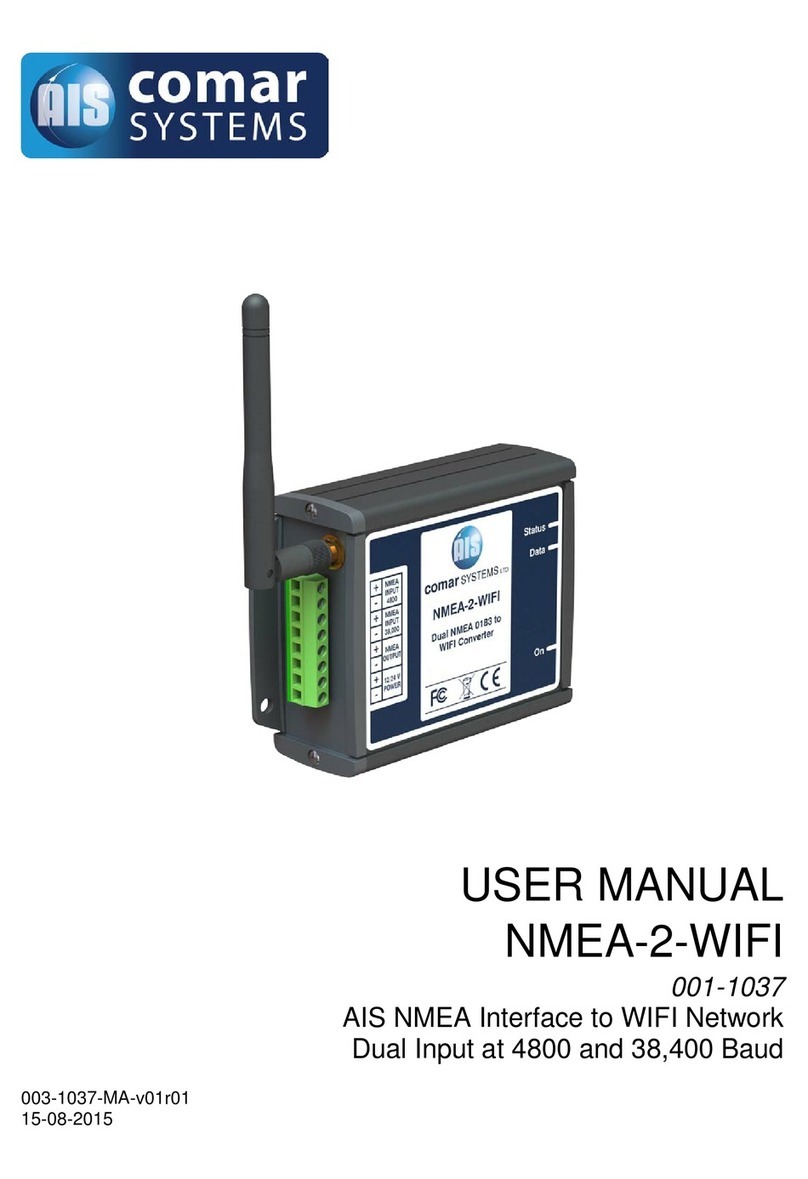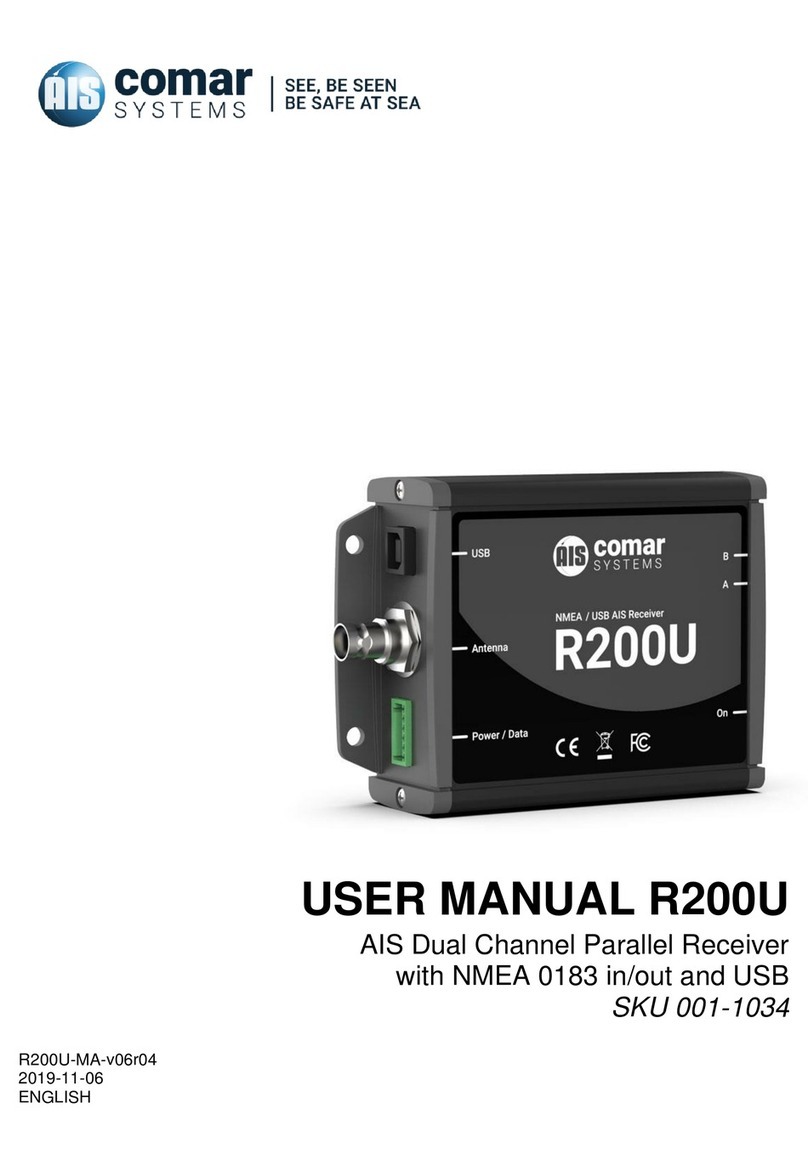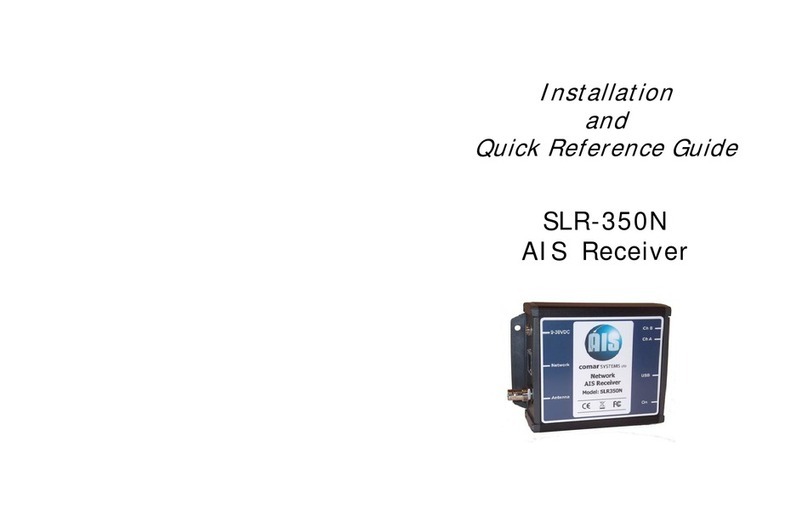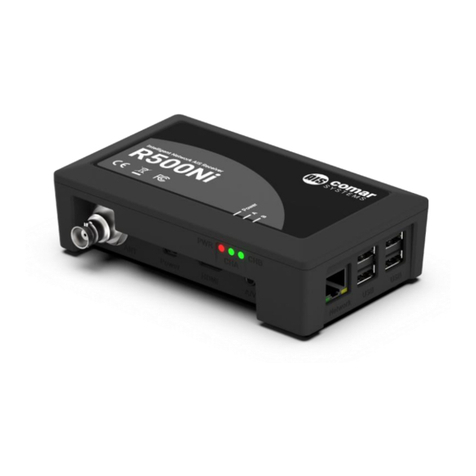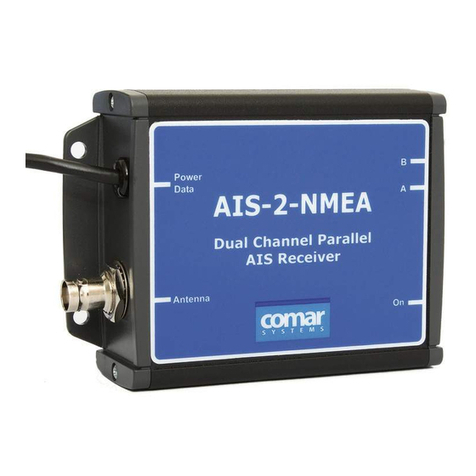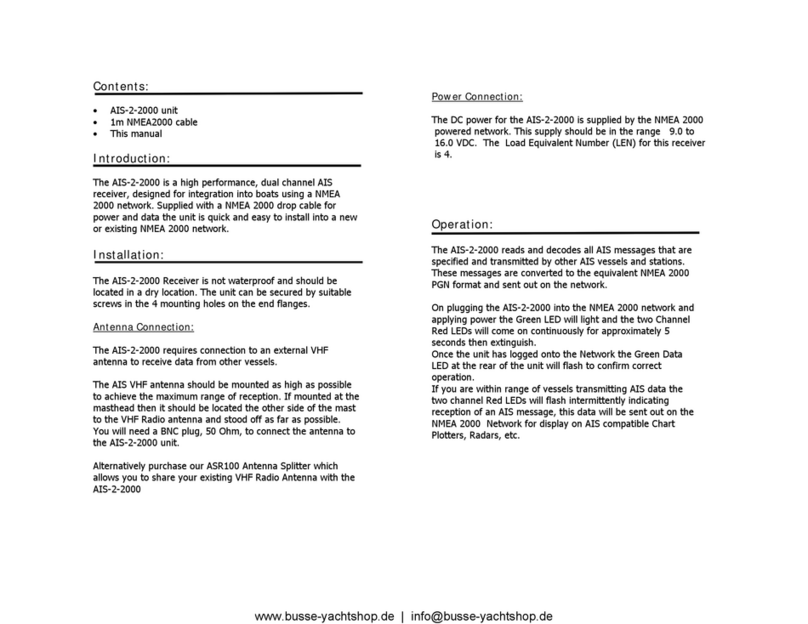Fault finding
No power light is displayed
●Check the power supply and that the unit is connected
correctly to a 12 or 24 volt DC supply
●Check the polarity of the supply is correct (red = +ve and
black is –ve).
Channel 1 and Channel 2 lights do not flash
●Check that a VHF antenna is fitted and correctly connected.
●Check that the antenna is correctly positioned – i.e. at a
suitable location to visibly ‘see’ vessels.
Hint: Until the deadlines for mandatory fitment are reached, ships may not
have fitted a Transponder, therefore if a ship is sailing past and no signal is
received there may be no fault with the SLR-200 receiver.
Channel 1 and Channel 2 lights flash but no data is received
If the red channel lights flash then data is being received from
nearby vessels.
●Check that the correct data cable is connected to the PC or
NMEA device.
●Check on the PC application or device that the correct port is
assigned and the correct baud rate is setup. The correct baud
rate is 38400.
I can receive ships on my display but no names are shown.
●Remember that the names of ships as well as other static
information is only sent every 6 minutes or when requested by
another station.
Product Support
Comar Systems Limited
Unit 7, Medina Court
Arctic Road
Cowes
Isle of Wight, PO31 7XD
United Kingdom
Telephone: +44 (0) 1983 282400 Fax: +44 (0)1983 280402
E-mail: techsupport@comarsystems.com
Internet: www.comarsystems.com
9
Introduction
Background to AIS
AIS is an Automatic Identification System. For improved safety and
specifically for collision avoidance reasons, vessels need to know the
position, details and navigational intentions of other vessels within
VHF range.
IMO regulations covering most commercial vessels worldwide, have
now been passed requiring that AIS transponders are fitted by
December 2004. The transponders use VHF frequencies to
●Transmit details of their own vessel and
●Receive details from other vessels or navigation aids within
VHF range.
The SLR-200
The SLR-200 is a low cost AIS (Automatic Identification System)
receive only unit, designed specifically for the Small Commercial,
Leisure, Fishing Boat and Vessel Monitoring Markets where vessels
are currently not mandated to transmit AIS information.
Connected to an on board PC running compatible software, or
Plotter, AIS data transmitted from ships within range can be
displayed on the screen giving the skipper or navigator a visual
interpretation of the traffic within VHF range.
Information from AIS transponders carried by most vessels or
navigation aids are transmitted at different rates as specified in
Tables 1 (see Page 10)
(Information source ITU Recommendations Technical Document ITU-R M.1371-1)
Information transmitted from vessels fitted with AIS transponders
includes:
●Name of vessel ●Call Sign ●Type of vessel
●Speed (SOG) ●Course (COG) ●Heading
●Position ●Navigational status ●Vessel dimensions
●MMSI number ●IMO number ●Draft
●Rate of turn ●Size of vessel ●Status
●Destination ●ETA ●Cargo
Note: Not all the above information is necessarily transmitted by each vessel.
3
